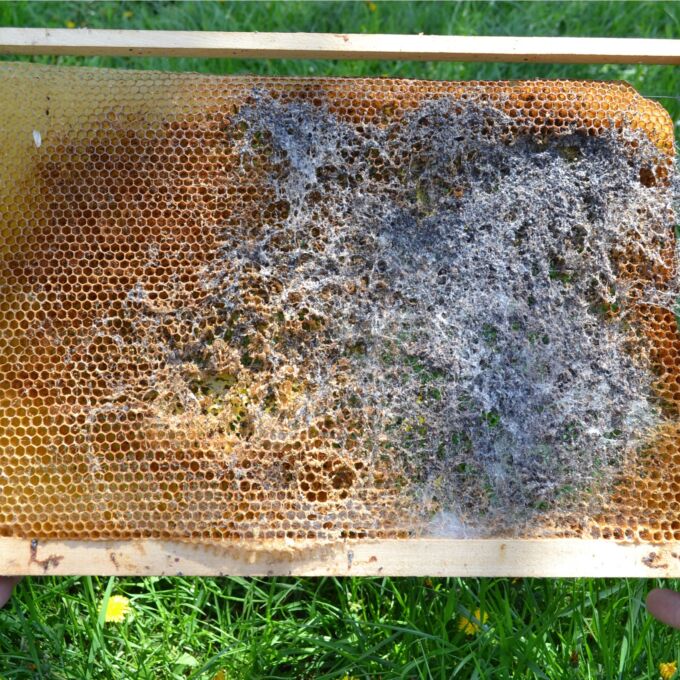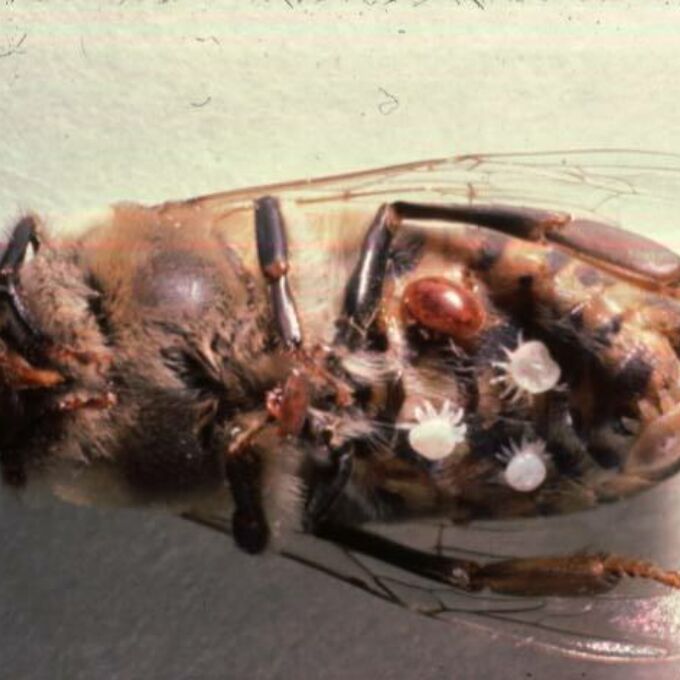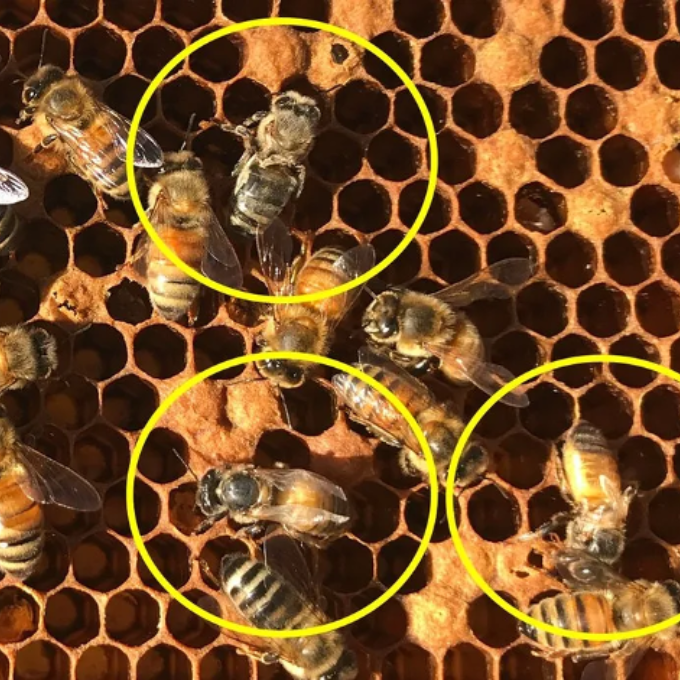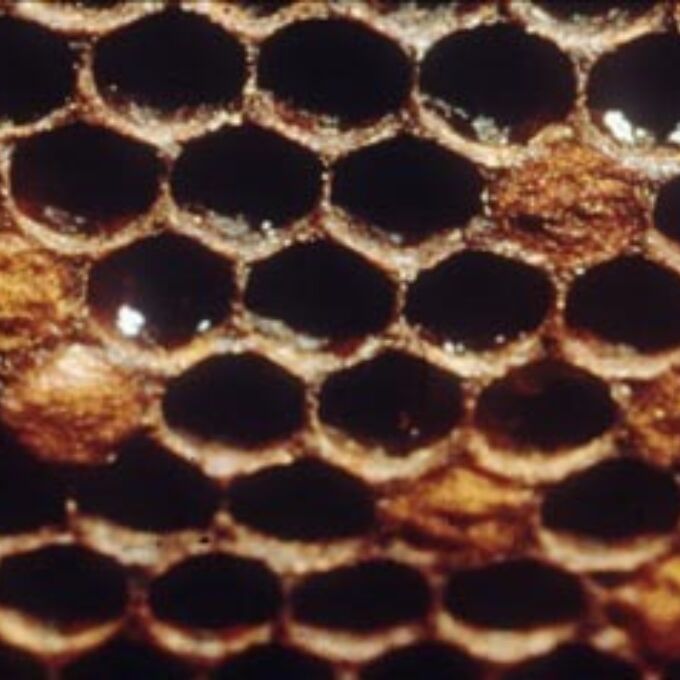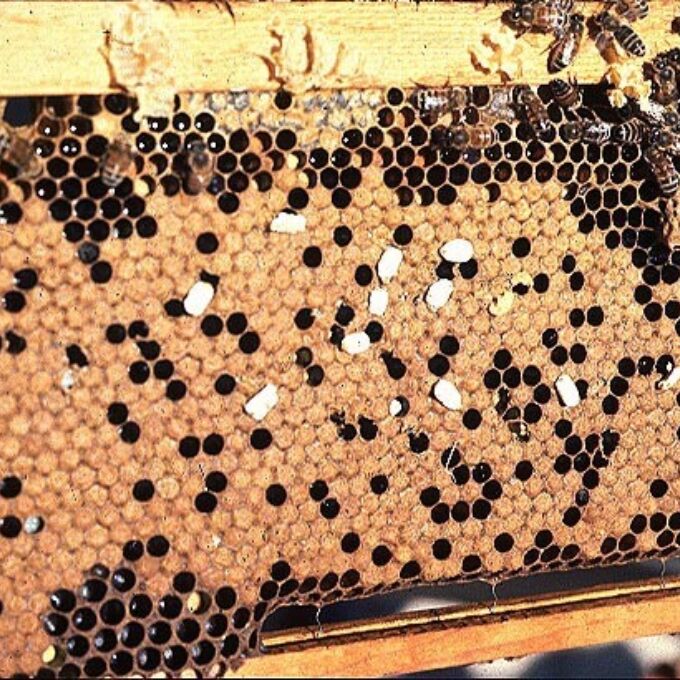
Diseases
Diseases are causes by viruses, bacteria and fungi.
Parasites can transmit these diseases, or weaken bees as they live in their intestines or feed on their blood. Many factors contribute to bees' ability to withstand these pathogens and parasites. Exposure to other stressors such as pesticides or poor nutrition can determine whether an infection is mild or fatal.
Greater Wax Moth
One example of a bee pest is the greater wax moth. Their larvae cause considerable damage to beeswax combs.
Varroa Mite
Varroa mites are an introduced parasite that feed on the blood of immature bees. While feeding, mites spread viruses and weaken the immune system of their bee host.
Deformed Wing Virus (DWV)
One example of a virus is DVW. It impacts the development of at least 20 bee species. The result is shortened, misshapen wings, paralysis, and shortened lifespan.
Photo Credit: Robyn Underwood, Penn State
American Foulbrood
American Foulbrood is a bacterial pathogen reduces honey bee larvae to gooey sacs that later harden into scales contaminated with bacterial spores. If spores spread, entire colonies perish.
Chalkbrood
Chalkbrood is a fungus that kills and dries the larvae of honey bees and wild bees into ‘mummies’.
Visit our Resource Library to learn more about other bee diseases and parasites.
More research is needed on declining bee populations.
Alarming rates of colony losses have prompted unprecedented levels of scientific interest in honey bee pathogens. In contrast, native bee diseases remain largely unstudied despite concurrent declines in wild populations. To protect managed and wild bee populations, scientists need to investigate how diseases affect different bee species, how diseases are transmitted between bee species, and how stressors change disease dynamics in bee populations.

